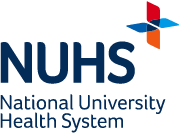Ankle Sprains
Sprains in the ankle cause pain and swelling in the surrounding ligaments. In addition, the patients may feel as though the joint will give way. Watch this video to learn about the treatment, recovery and prevention tips for ankle sprains.
Cartilage Damage
The cartilage of the ankle is susceptible to injuries if sprains, fractures or other ankle injuries are neglected.
Muscle Strains
Strains of the muscles around the hip and pelvis can cause pain and spasms, most commonly groin pulls and hamstring strains.
Meniscus tears
Menisci can be torn by shearing forces of rotation applied to the knee during sharp and rapid motions, especially in sports demanding quick-reaction body movements. Incidence increases with age and degeneration of the underlying cartilage. More than one tear can be present in an individual meniscus. Patients with meniscal tears may have rapid onset of a popping sensation during a certain activity or knee movement.
Patients may experience pain in the knee's interior or exterior during activities. Some patients also experience 'locking', which is a sensation of a 'jammed' knee unable to straighten fully.
Occasionally, this injury is associated with swelling and a warm sensation in the knee, often associated with locking or an unstable sensation in the joint. The surgeon can perform certain manoeuvres while examining the knee which may help detect meniscal tears.
Routine X-rays may not reveal meniscal tears but can be used to exclude other problems of the knee joint.
The meniscal tear can be diagnosed in one of three ways:
- Arthroscopy - A surgical technique where a small diameter video camera is inserted through tiny incisions on the sides of the knee to examine and repair internal knee joint problems. Tiny instruments can be used during arthroscopy to repair the torn meniscus.
- Arthrography - A radiology technique where a contrast liquid is directly injected into the knee joint and internal structures of the knee joint so that they become visible on X-ray film. It is not used commonly used nowadays as MRI is getting more popular.
- MRI scan - A radiology technique where magnetic fields and a computer combine to produce two- or three-dimensional images of the internal structures of the body. It does not use X-rays and can give accurate information about the internal structures of the knee when considering a surgical intervention. Meniscal tears are often visible using an MRI scanner.
Once diagnosed, meniscal tears are generally repaired arthroscopically.















